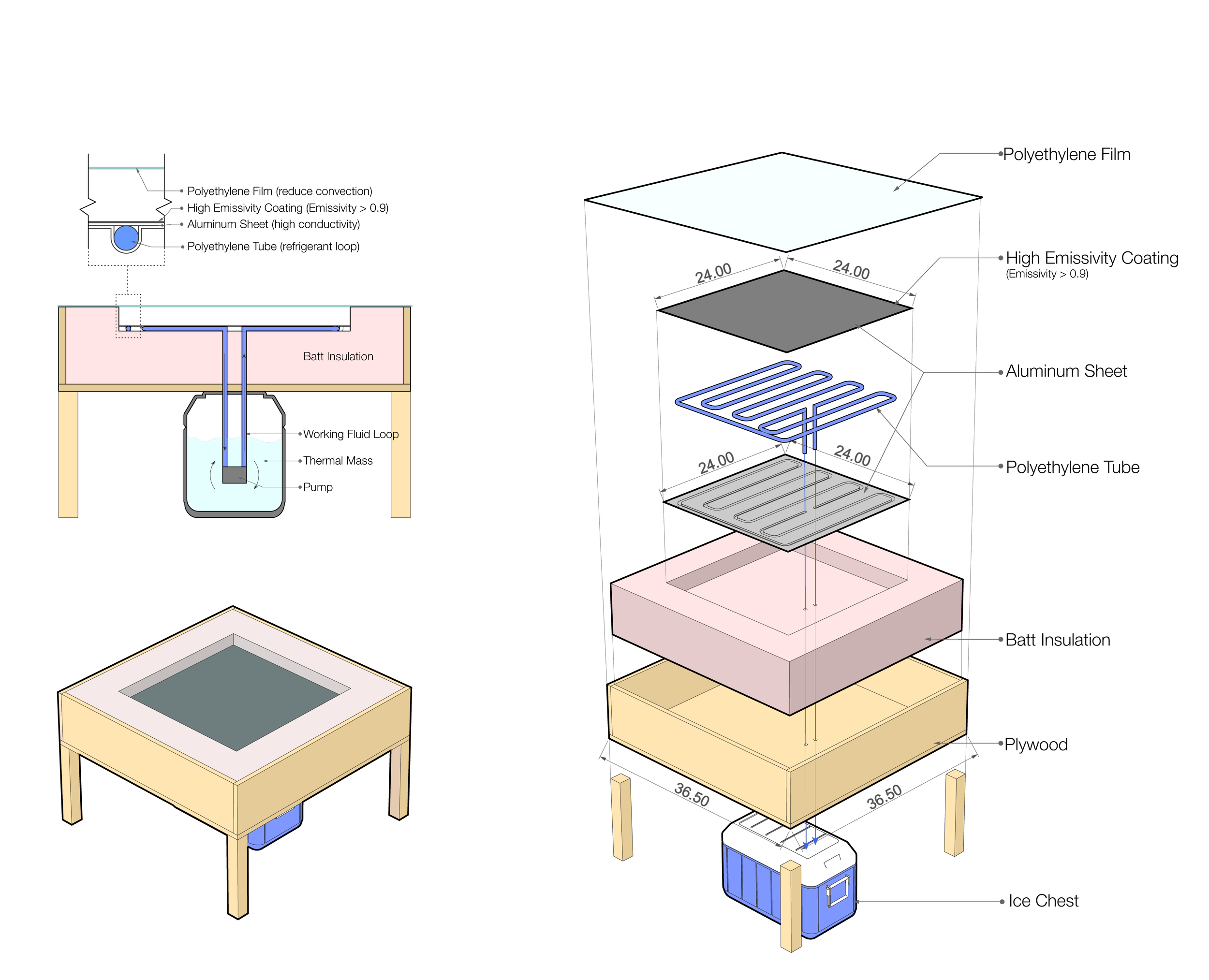A Hybrid System of Radiative Cooling Integrated with Desiccant-Assisted Evapo-Radiant Cooling
Prototype & Innovation Winter 2024
To optimize thermal comfort in hot, humid environments, we propose an innovative hybrid system that integrates sky cooling with humidity control to efficiently manage both heat and moisture. To fully harness the potential of the air system, we identify that the exhaust air from the HVAC system retains unused drying capacity—achieved through significant energy input—that can be leveraged before being released. By utilizing this dry air for evaporative cooling, additional heat can be absorbed, maximizing the system’s overall efficiency.
Click for more detail information in research paper Introduction to the Hybrid System
The hybrid cooling system presented in this project combines innovative sustainable technologies to tackle the challenges of energy-intensive air conditioning systems. By merging radiative cooling and Radiant-Evapo Cooling (REC) panels, the system achieves high energy efficiency and enhanced thermal comfort. The radiative cooling component utilizes advanced materials that reflect solar radiation while emitting thermal energy to the cold sky, making it a passive and environmentally friendly option. On the other hand, the REC panel amplifies cooling through a synergy of radiant and evaporative processes. Together, these components form a robust and adaptive system capable of addressing diverse climatic conditions. This hybrid approach demonstrates the potential for reducing energy demands in buildings while maintaining indoor thermal comfort.
Prototype: Sky Radiative Cooling (SRC)
The Radiative Cooling System leverages the natural process of thermal radiation to provide an energy-efficient solution for cooling buildings. By utilizing surfaces with high thermal emissivity and solar reflectivity, the system directs heat away from the building and toward the cold outer space, bypassing atmospheric absorption. This passive system operates without the need for mechanical components or electricity, making it both cost-effective and sustainable. Its effectiveness is maximized under clear skies and low humidity, making it particularly suitable for arid and semi-arid climates. As part of the hybrid system, the radiative cooling system plays a critical role in reducing reliance on traditional HVAC systems, thereby cutting energy consumption and carbon emissions.
Radiative Cooling System Experiment
The radiative cooling system prototype comprises two primary components: a radiative cooling emitter and a thermal storage unit. The emitter features a 24” x 24” surface constructed from two metal sheets—an upper flat sheet and a lower corrugated sheet—sandwiching polyethylene tubes that circulate the working fluid. This configuration efficiently transfers heat from the thermal storage to the emitter's surface, where it is released to the sky. To enhance radiative efficiency, the emitter's surface is coated with a matte black finish, achieving an emissivity greater than 0.9 for optimal thermal radiation loss.
The emitter is enclosed in a wooden container insulated with multiple layers of batt insulation to reduce external heat gain, and a polyethylene film atop the system further minimizes convective heat transfer. The thermal storage unit, consisting of five gallons of water housed in an insulated ice chest, is designed to minimize heat exchange with the environment. Connected to the emitter through the working fluid circuit, this configuration ensures consistent heat transfer and stable operation, making the system both efficient and reliable for sustainable cooling.
Prototype: Radiant-Evapo Cooling (REC) Panel
The Radiant-Evapo Cooling (REC) Panel is an innovative cooling technology that combines the principles of radiant and evaporative cooling to enhance performance across varying climatic conditions. The REC panel uses a dual-layered design, where water circulates through a porous material, facilitating evaporation and absorbing latent heat from the surroundings. Simultaneously, its radiant cooling component dissipates heat to the ambient environment, further amplifying the cooling effect. This combination enables the panel to maintain a consistent cooling performance, even in humid climates where traditional evaporative cooling alone may struggle. The REC panel exemplifies the integration of passive and active cooling technologies, showcasing its potential to improve energy efficiency and indoor comfort in modern buildings.
















